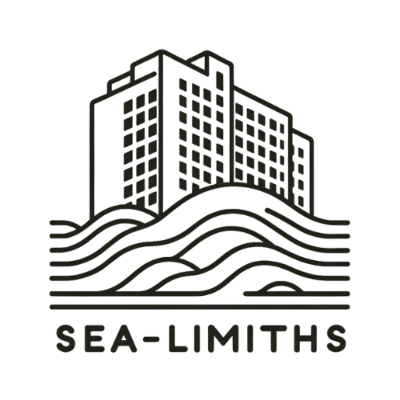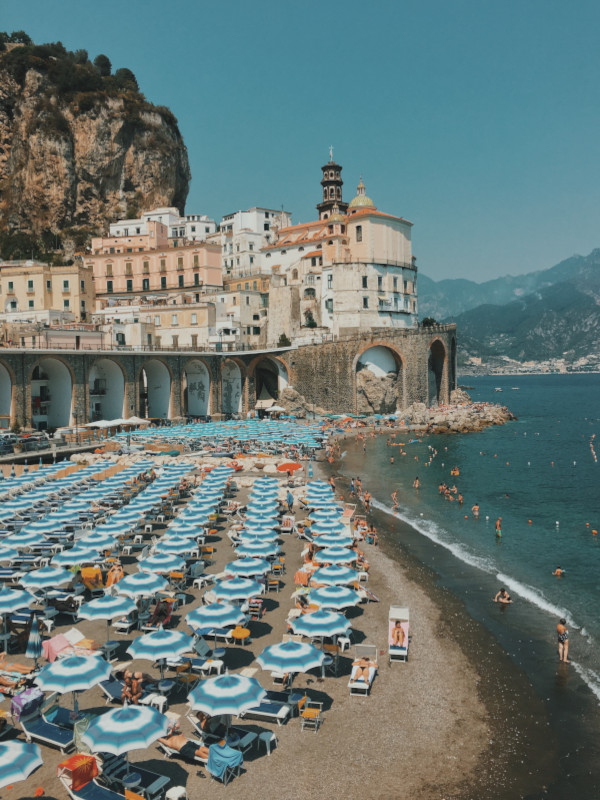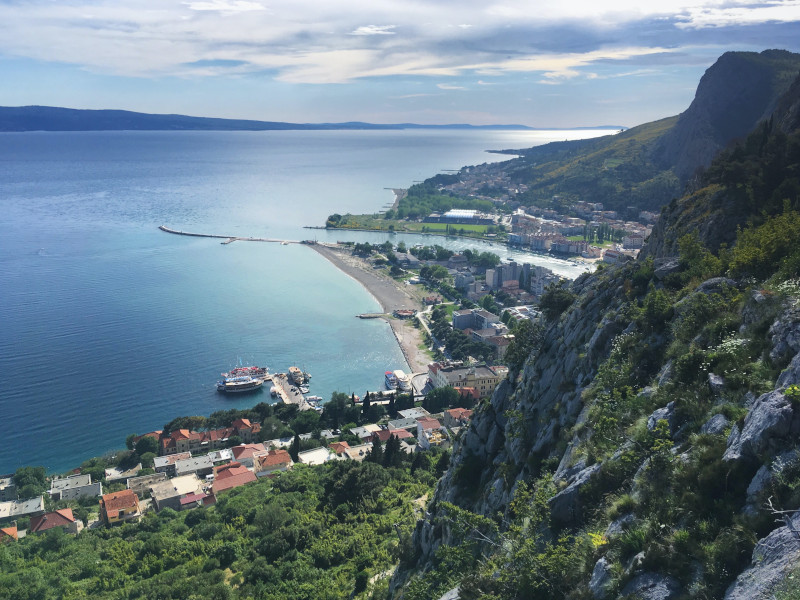SEA-LIMITHS
Sea Level Rise Impacts on Italian Hospitality
Project
The SEA-LIMITHS project stands at the forefront of a crucial investigation into the economic and environmental impacts of coastal sea-level rise, particularly focusing on the hospitality industry. With a unique approach that harnesses the power of Artificial Intelligence (AI), this project aims to illuminate the often-overlooked transmission channel from climate change to hospitality infrastructure losses.
Why it matters
- Global concern: the rising sea level, a direct consequence of climate change, poses a significant threat to sandy beaches worldwide, crucial for the hospitality sector.
- Focus on Italy: Italy's coastlines, dominated by sandy beaches, face a critical challenge. Projections suggest severe beach erosion and loss, potentially decimating over half of the world's sandy beaches by 2100.
- Policy gap: current strategies inadequately address the quantified risks of sandy beach loss, an oversight this project seeks to correct.
Objectives
SEA-LIMITHS is dedicated to a detailed examination of sea-level rise's impacts, striving to achieve the following specific objectives aligned with the United Nations Sustainable Development Goals (SDGs):
- Beach Mapping and Climate Impact Assessment (SDG 13):
- Timeline: months 1-6
- Focus: analysing the current state of sandy beaches in Veneto and Emilia Romagna under the influence of climate change.
- Spatial Analysis of Hospitality in Coastal Areas (SDGs 8, 9, 11):
- Timeline: months 6-12
- Focus: understanding the spatial dynamics of the hospitality sector on these beaches.
- Economic Cost Calculation (SDGs 8, 9, 11, 12, 13):
- Timeline: months 12-15
- Focus: estimating the economic costs linked to rising sea levels.
- Impact on Hospitality Sector (SDGs 8, 9, 11, 12, 13):
- Timeline: months 15-20
- Focus: assessing the economic implications of such losses for the hospitality sector.
Bridging academia and policy
SEA-LIMITHS is not just an academic exercise but a project with profound policy implications. It aims to create a detailed map of the hospitality sector, integrate regional equilibrium models with macroeconomic analysis, and offer insights for sustainable and economically viable mitigation strategies in the Italian hospitality sector.
Sources
These sources provide a solid foundation for the research and analysis conducted in the SEA-LIMITHS project, focusing on the economic and environmental impacts of sea-level rise on Italy's hospitality sector.
Sandy beaches and shoreline changes
- Luijendijk, A., Hagenaars, G., Ranasinghe, R., Baart, F., Donchyts, G., & Aarninkhof, S. (2018). The state of the world’s beaches. scientific reports, 8(1).
- Vousdoukas, M., Ranasinghe, R., Mentaschi, L., Plomaritis, T., Athanasiou, P., Luijendijk, A., … & Feyen, L. (2020). Sandy coastlines under threat of erosion. nature climate change 10(3), 260-263.
- Depsky, N., Bolliger, I., Allen, D., Choi, J., Delgado, M., Greenstone, M., … & Hsiang, S. (2023). Dscim-coastal v1.1: an open-source modeling platform for global impacts of sea level rise. Geoscientific model Development, 16(14), 4331-4366.
Climate change and coastal impacts
- Antonioli, F., Falco, G., Presti, V., Moretti, L., Scardino, G., Anzidei, M., … & Mastronuzzi, G. (2020). Relative sea-level rise and potential submersion risk for 2100 on 16 coastal plains of the mediterranean sea. Water, 12(8), 2173.
- Perini, L., Calabrese, L., Luciani, P., Olivieri, M., Galassi, G., & Spada, G. (2017). Sea-level rise along the emilia-romagna coast (northern italy) in 2100: scenarios and impacts. Natural hazards and earth system sciences, 17(12), 2271-2287.
- Furlan, E., Derepasko, D., Torresan, S., Pham, H., Fogarin, S., & Critto, A. (2022). Ecosystem services at risk in Italy from coastal inundation under extreme sea level scenarios up to 2050: a spatially resolved approach supporting climate change adaptation. Integrated environmental assessment and management, 18(6), 1564-1577.
Economic damage assessment
- Prahl, Boris F., et al. (2018). Damage and protection cost curves for coastal floods within the 600 largest European cities. Scientific data 5.1: 1-18.
- Huizinga, H. J., de Moel, H., & Szewczyk, W. (2017). Global flood depth-damage functions. Methodology and the database with guidelines.
- Bosello, F., & Standardi, G. (2018). A Sub-national CGE model for the European Mediterranean Countries. The New Generation of Computable General Equilibrium Models: Modeling the Economy, 279-308.
AI / ML techniques
- Thelwall, M. (2001). A web crawler design for data mining. Journal of Information Science, 27(5), 319-325.
- Özen, İ. A. and Ilhan, İ. (2022). Opinion mining in tourism. Research Anthology on Implementing Sentiment Analysis Across Multiple Disciplines, 1506-1527.
- Fogarin, S., Marco, Z., Barco, M. K. D., Zennaro, F., Furlan, E., Torresan, S., … & Critto, A. (2023). Combining remote sensing analysis with machine learning to evaluate short-term coastal evolution trend in the shoreline of Venice. Science of The Total Environment, 859, 160293.
- Bianconi, A., Furlan, E., Simeoni, C., Pham, V. T., Vascon, S., Critto, A., … & Marcomini, A. (2023). Evaluating the risk of cumulative impacts in the Mediterranean sea using a random forest model.
- Ferrario, D., Furlan, E., Torresan, S., Maraschini, M., & Critto, A. (2022). Harnessing machine learning and deep learning applications for climate change risk assessment: a survey.
Publications
Currently, our project is in the dynamic phase of research and development, leading to a series of insightful working papers. Although these papers have not yet been formally published, they represent the cutting-edge work being done as part of the SEA-LIMITHS project.
This section will be updated with a list of publications derived from our research, offering valuable contributions to the field of climate change impacts on hospitality.
Working papers:
- Integrative Data Fusion: Crafting a Comprehensive Hospitality Sector Database for Veneto and Emilia-Romagna
- Coastal Futures: Environmental and Economic Realities in the Wake of Rising Seas
Results
As of now, the SEA-LIMITHS project is in its early stages, and we are yet to finalize concrete results.
This project is unique in its approach, as it aims to translate complex scientific findings into practical, policy-relevant insights for a wide range of audiences, including the general public.
We are excited about the potential of this research to contribute significantly to public discourse and policy development on climate change and coastal management.
Stay tuned for updates and key findings, which we will share here as our research progresses, offering new perspectives and solutions for one of the most pressing environmental challenges of our time.



